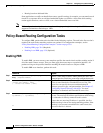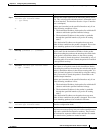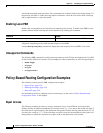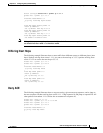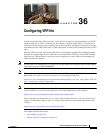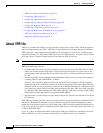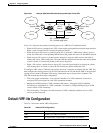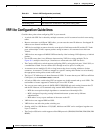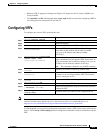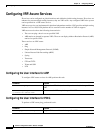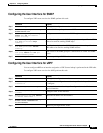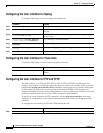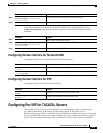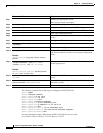
36-4
Software Configuration Guide—Release 15.0(2)SG
OL-23818-01
Chapter 36 Configuring VRF-lite
VRF-lite Configuration Guidelines
VRF-lite Configuration Guidelines
Consider these points when configuring VRF in your network:
• A switch with VRF-lite is shared by multiple customers, and all customers have their own routing
tables.
• Because customers use different VRF tables, you can reuse the same IP addresses. Overlapped IP
addresses are allowed in different VPNs.
• VRF-lite lets multiple customers share the same physical link between the PE and the CE. Trunk
ports with multiple VLANs separate packets among customers. All customers have their own
VLANs.
• VRF-lite does not support all MPLS-VRF functionality: label exchange, LDP adjacency, or labeled
packets.
• For the PE router, there is no difference between using VRF-lite or using multiple CEs. In
Figure 36-1, multiple virtual Layer 3 interfaces are connected to the VRF-lite device.
• The Catalyst 4500 series switch supports configuring VRF by using physical ports, VLAN SVIs, or
a combination of both. You can connect SVIs through an access port or a trunk port.
• A customer can use multiple VLANs as long because they do not overlap with those of other
customers. A customer’s VLANs are mapped to a specific routing table ID that is used to identify
the appropriate routing tables stored on the switch.
• The Layer 3 TCAM resource is shared between all VRFs. To ensure that any one VRF has sufficient
CAM space, use the maximum routes command.
• A Catalyst 4500 series switch using VRF can support one global network and up to 64 VRFs. The
total number of routes supported is limited by the size of the TCAM.
• You can use most routing protocols (BGP, OSPF, EIGRP, RIP and static routing) between the CE
and the PE. However, we recommend using external BGP (EBGP) for these reasons:
–
BGP does not require multiple algorithms to communicate with multiple CEs.
–
BGP is designed for passing routing information between systems run by different
administrations.
–
BGP makes it easy to pass attributes of the routes to the CE.
• VRF-lite does not support IGRP and ISIS.
• VRF-lite does not affect the packet switching rate.
• Starting with Cisco IOS Release 12.2(50)SG, Multicast and VRF can be configured together on a
Layer 3 interface.
• The Catalyst 4500 series switch supports all the PIM protocols (PIM-SM, PIM-DM, PIM-SSM, PIM
BiDIR).
VRF maximum routes None.
Forwarding table The default for an interface is the global routing table.
Table 36-1 Default VRF Configuration (continued)
Feature Default Setting



